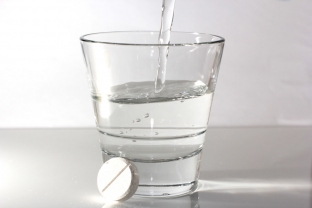Forms and clinical manifestations of mastocytosis you can find in our previous article. Treatment of mastocytosis should begin after diagnosis. The spotty and maculopapular form of mastocytosis must be differentiated from pigmented nevi, spotted idiopathic pigmentation, drug toxidermia. Drug toxicoderma is characterized by acute inflammatory phenomena and a clear connection with the use of drugs. Mastocytoma clinically resembles pigmented nevi, nevoxanthoendothelioma, histiocytoma, or neocarcinoma. Find out the aspects of diagnosis and treatment of mastocytosis in our article.
Differential diagnosis required before treatment of mastocytosis
When making a differential diagnosis before treating mastocytosis, one should keep in mind the absence of a positive Darier test in these diseases and a vesicular reaction with minor trauma. Of great importance are the data of histological examination of the lesion.
In case of bullous rashes in children suffering from mastocytosis, it is necessary to carry out a differential diagnosis with bullous impetigo, insect bites, Dühring's herpetiform dermatitis, bullous form of exudative erythema multiforme.
With bullous impetigo, there is no chronic course of the disease, blisters appear on the externally unaltered skin.
Erythema multiforme is characterized by seasonality, an acute onset of the disease with fever, a typical clinical picture (spotty, spotty-vesicular elements, a bull's-eye symptom) with a predominant localization of rashes on the extensor surfaces of the extremities.
What are the main aspects of the treatment of mastocytosis?
Topical glucocorticoids (class II) sometimes provide temporary relief, but only under occlusion. What other drugs are used to treat mastocytosis, read further on estet-portal.com. Due to the increased risk of side effects associated with their use (skin atrophy, resorption), the administration of these drugs is limited to a few days and to small surfaces.
Although taking interferon .alpha.2.beta. has proved its worth in the treatment of adult mastocytosis, in the case of pediatric forms, due to severe and potentially irreversible side effects (spastic paresis due to vascular occlusion), it should only be used as a last resort.
In adulthood, systemic forms of mastocytosis are also used c-KIT inhibitors (imatinib, dasatinib, semaxinib).
In case of pruritus, treatment of mastocytosis should include the following measures:

- water zinc mash, if needed;
- creams with polidocanol, over the cream a compress of one wet and one dry layer or tubular dressings.
If local measures are not enough, oral antihistamines are indicated:
- non-sedating H1 antihistamines: cetirizine, loratadine;
- sedative H1-antihistamines: hydroxyzine, ketotifen;
- if no effect, additional H2 antihistamine (cimetidine, 30 mg/kg body weight per day);
- if no effect, additional cyproheptadine (0.25 mg/kg body weight per day).
Treatment of mastocytosis with ultraviolet light. Prevention of mastocytosis
In adolescents over 15 years of age and adults, the use of A1 ultraviolet light (5 exposures per week for three weeks) may help to lighten the often cosmetically unpleasant hyperpigmentation in urticaria pigmentosa. Treatment of mastocytosis is carried out at low doses and under the supervision of a physician, in order to prevent the potential risk of excessive release of histamine, if necessary.
In adults, gradual, starting with the lowest doses of oral aspirin (20-25 mg per day) leads to a decrease in skin manifestations.

In secondary prevention, it is important to avoid histamine-releasing factors such as:
- non-immunological irritants: friction, exposure to sunlight, sudden exposure to cold or warm water;
- immunological irritants: for example, insect bites. The likelihood of specific sensitization to insect venom and other antigens in mastocytosis is not increased, however, anaphylactic reactions due to the massive release of histamine are especially difficult. Therefore (with appropriate indications) one should continue hyposensitization until spontaneous regression of mastocytosis and always carry an “first aid kit”
- Histamine-releasing medications: Codeine (in cough juices) is the most important of the wide range for children. Non-steroidal antirheumatic drugs such as ibuprofen can in some cases cause the release of histamine. For urgent indications, the reaction after the trial dose should be observed.
Thus, the problem of mastocytosis is very relevant and requires a multidisciplinary approach and complex treatment of mastocytosis. With persistent skin symptoms of mastocytosis without a tendency to regress, up to adulthood, one should proceed from an increased probability of systemic damage in 15-30% of cases.







Add a comment